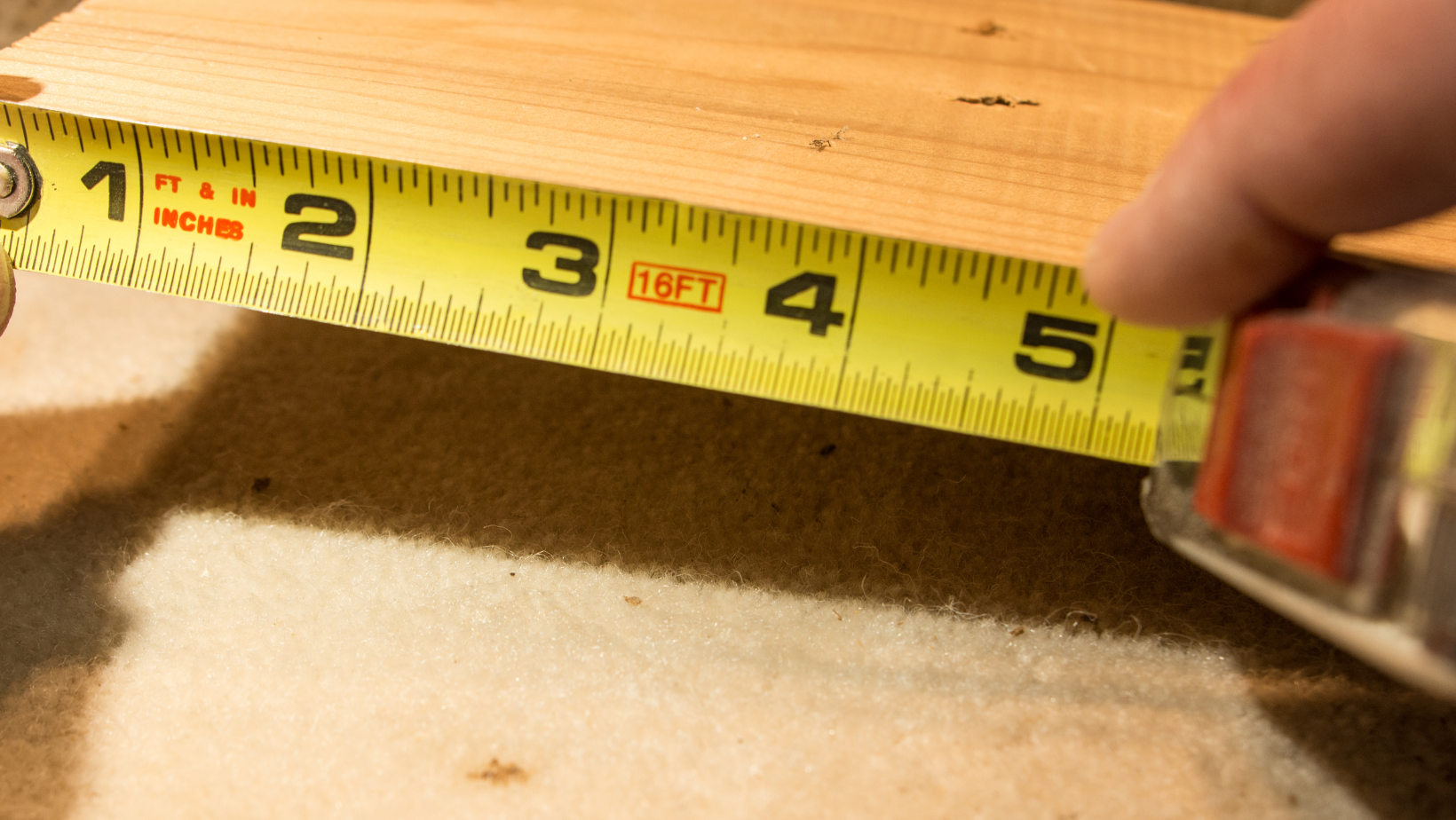Your staircase is more than just a way to move between floors—it’s a key part of your home’s safety and design.
The standard measurements for stair treads and risers ensure that stairs are safe, comfortable, and meet building codes.
Treads should be at least 10 inches deep, while risers should be between 7 and 8 inches high to provide a balanced and stable step.
In this guide, you'll learn how these dimensions impact safety, how to measure them accurately, and how to choose the right specifications for your home.
Whether you're building new stairs, or putting carpet stair treads, understanding these standards will help you create a staircase that looks great and feels secure underfoot.
Why Accurate Measurements Matter
Installing carpet stair treads with precise measurements can help prevent gaps and overhangs that could cause tripping.
Each step should have enough space for your foot while keeping a consistent rise between steps.
By following standard guidelines, you create stairs that look great and feel safe for everyone in your home.
Small measurement errors can lead to uneven steps, which make stairs uncomfortable and even dangerous.
Accurate sizing also improves the durability of stair treads, ensuring they stay in place and don’t wear down prematurely.
Taking the time to measure correctly helps avoid costly mistakes and potential safety hazards.
Standard Measurements for Stair Treads and Risers
The comfort and safety of a staircase depend on getting the tread and riser dimensions right.
-
Tread Depth: The flat part where you step should be at least 10 inches deep.
-
Riser Height: The vertical part between steps should be between 7 and 8 inches high.
These measurements create a balanced step that reduces strain when climbing and helps prevent falls.
A stair tread depth of less than 10 inches can cause people to misstep, leading to slips or loss of balance.
On the other hand, risers taller than 8 inches require extra effort to climb, which can be tiring over time.
Consistency in tread and riser size across the staircase enhances both safety and aesthetics, making the stairs easier to navigate.
How to Measure Stair Tread Depth
Measuring the depth of stair treads ensures a secure and comfortable step.
Follow these steps to measure stair tread depth correctly:
-
Use a Straight Edge: Place a level or ruler flat across the stair tread, extending slightly over the edge.
-
Measure Vertically: Use a tape measure to check the distance from the straight edge down to the top of the riser below.
-
Confirm the Depth: The measurement should be at least 10 inches to allow enough foot space.
If your measurement is slightly off, you may need to adjust your stair design to ensure compliance with safety standards.
A properly measured tread depth prevents foot overhang, which can make descending stairs feel unstable.
For best results, always take multiple measurements from different parts of the tread to ensure accuracy.
How to Measure and Cut Stair Treads
Measuring and cutting stair treads accurately ensures a perfect fit and a smooth walking surface.
Follow these steps for precise cuts:
-
Measure the Width and Depth: Use a tape measure to check the exact size of each step. Measure every stair separately, as sizes may vary.
-
Mark the Tread Material: Use a pencil and a carpenter's square to draw straight, clear lines for cutting.
-
Cut Carefully: Choose the right saw for the material, such as a circular saw for wood. Always wear safety goggles and follow proper cutting precautions.
Even small cutting errors can cause uneven steps, affecting the overall stability of the staircase.
Taking your time to mark and cut precisely ensures that each tread fits snugly, reducing movement and increasing durability.
Double-checking your measurements before cutting can save time and prevent wasted materials.
What Are the Measurements for Stair Treads?
Stair treads must have the correct size to ensure safety, comfort, and ease of use.
-
Width: Residential stair treads should be at least 36 inches wide to allow enough space for foot traffic.
-
Depth: A minimum of 10 inches provides enough surface area to step safely.
Using these measurements creates a staircase that is both functional and aesthetically pleasing.
A wider stair tread can be beneficial in homes with heavy foot traffic, providing extra walking space.
In commercial buildings, tread width requirements are often greater to accommodate accessibility and emergency evacuation needs.
Well-measured stair treads also contribute to a uniform design, which enhances the overall appearance of the staircase.
Is an 8-Inch Step Too High?
An 8-inch riser height is at the upper limit of recommended stair measurements.
While it meets building codes, it may not be the best choice for every home.
Consider these factors when deciding on riser height:
-
Comfort: Taller steps can be harder to climb, especially for children, older adults, and those with mobility challenges.
-
Safety: A steeper staircase increases the risk of missteps and falls.
A riser height closer to 7 inches is generally more comfortable for daily use, reducing leg strain.
If your staircase is used frequently, a lower riser height can make it easier to navigate without extra effort.
For homes with elderly residents, choosing a 7-inch riser can significantly improve safety and accessibility.
What is the Most Common Step Height?
The most common riser height for residential stairs is 7 inches.
This height provides a balance between ease of use and efficient space usage.
-
Easy to Climb: A 7-inch step requires less effort, making it more comfortable for daily use.
-
Space-Saving: It allows a smoother transition between floors without making the staircase too steep.
Stairs with a 7-inch riser are often preferred in homes with young children and older adults due to their lower impact on joints.
This standard also ensures a consistent stride length, preventing awkward or tiring steps.
If space allows, slightly deeper treads paired with a 7-inch riser create a staircase that feels natural to walk on.
Conclusion
The standard measurements for stair treads and risers create staircases that are safe, comfortable, and visually appealing.
By following these guidelines, homeowners and builders can ensure that stairs meet safety standards and provide a smooth, secure walking experience.
Whether you're installing new stairs or updating an existing one, getting the dimensions right makes all the difference.
Taking the time to measure properly saves money, prevents errors, and ensures that your staircase lasts for years.
Beyond safety, well-measured stairs contribute to the overall design of a home, making them a functional yet stylish element.
With proper planning, you can create a staircase that enhances both usability and aesthetics.
Upgrade Your Stairs with Style and Comfort
At Oak Valley Designs, we know that a well-designed staircase isn’t just about looks—it’s about safety, comfort, and creating a space that feels like home.
Whether you're looking for carpet stair treads, landings, or hallway runners, we have high-quality, easy-to-install options that bring warmth and elegance to your space.
Not sure what will work best for your home?
We’re here to help.
Our team can guide you in finding the perfect fit for your stairs, ensuring a seamless look and a secure step.
Visit us or reach out today!
-
Website: https://oakvalleydesigns.com/
-
Phone: 706.331.0315
-
Email: info@oakvalleydesigns.com
-
Address: 30 River Ct SW Bldg E, Cartersville, GA 30120
Let’s make your staircase both beautiful and safe—one step at a time.




